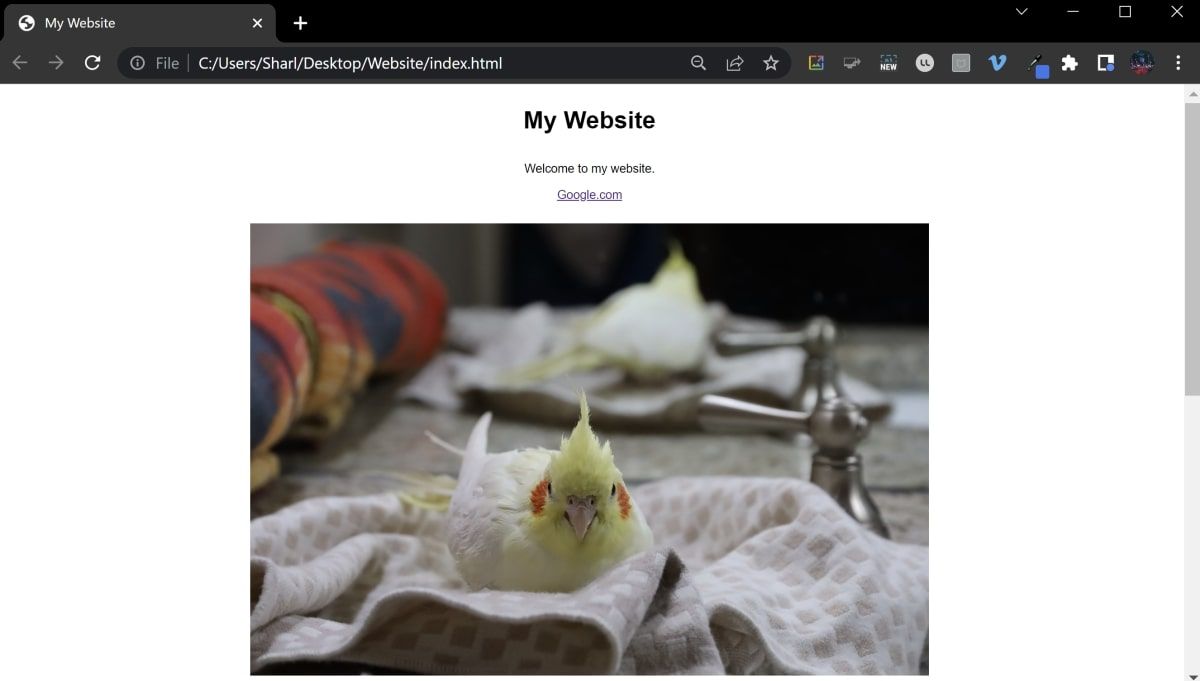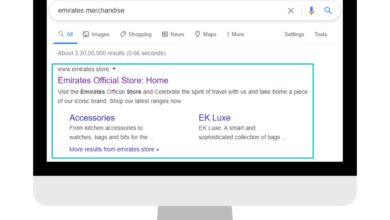
Absolute vs Relative URLs for SEO A Deep Dive
Absolute vs relative urls for seo – Absolute vs relative URLs for is a crucial topic for website owners. Understanding the nuances of these URL structures is essential for optimal search engine optimization. This comprehensive guide will explore the differences between absolute and relative URLs, their implications, and practical considerations for implementation, along with advanced strategies for managing your website’s URLs effectively.
From basic definitions to advanced URL management strategies, this article will guide you through the intricacies of absolute and relative URLs, enabling you to make informed decisions for your website’s performance. We’ll dissect the impact on crawlability, sitemaps, and even website security.
Understanding Absolute and Relative URLs: Absolute Vs Relative Urls For Seo
URLs are the fundamental addresses used to locate resources on the web. Understanding the difference between absolute and relative URLs is crucial for web developers and professionals. They dictate how browsers interpret and access these resources, impacting everything from page load times to search engine indexing.Absolute URLs provide a complete address, while relative URLs offer a path within a specific context.
This distinction influences how a website is structured and how different parts of it connect. This understanding is vital for creating a robust and well-functioning website.
Absolute URLs: Complete Addresses
Absolute URLs specify the full path to a resource, starting from the root domain. They are independent of the current page’s location.
The structure typically includes the protocol (e.g., http:// or https://), domain name, path to the resource, and optionally, query parameters and fragments.
Example:
https://www.example.com/about/contact.html
This example demonstrates an absolute URL. It clearly defines the location of the ‘contact.html’ file within the ‘www.example.com’ domain, regardless of where it’s referenced from.
Absolute URL Structure in Different Contexts
Absolute URLs are consistent across all web contexts. Whether used in links, image tags, or other elements, the full path is always referenced.
- Links: Clicking a link with an absolute URL navigates to the specified resource, no matter the current page.
- Image Tags: When an image is referenced with an absolute URL, the browser downloads the image from the defined location.
- CSS Files: Style sheets referenced with absolute URLs are fetched directly from the specified address.
Relative URLs: Path References
Relative URLs specify the location of a resource relative to the current page. They use paths and filenames, and don’t start with a protocol or domain.
Example:
./images/logo.png
This example indicates a file named ‘logo.png’ within the ‘images’ directory, relative to the current page.
Relative URL Structure in Different Contexts
Relative URLs depend on the context of the page they are referenced from. They are useful for organizing files and folders within a website.
- Links: A link with a relative URL navigates to a resource based on the current page’s location within the website’s structure.
- Image Tags: When using a relative URL for an image, the browser locates the image within the directory of the current page.
- CSS Files: Style sheets referenced with relative URLs are located relative to the current CSS file’s position within the website.
Differences in Location References
The key difference lies in how the location is defined. Absolute URLs provide the complete address, while relative URLs provide a path relative to the current document.
| Feature | Absolute URL | Relative URL |
|---|---|---|
| Location Reference | Complete, starting from the root domain | Relative to the current document |
| Structure | Includes protocol, domain, path | Path only, no protocol or domain |
| Independence | Independent of the current page | Dependent on the current page |
Implications of URL Structure
URL structure, a seemingly technical aspect, significantly impacts how search engines crawl and index your website, directly affecting your search engine rankings. Choosing between absolute and relative URLs isn’t just about aesthetics; it profoundly influences crawlability, sitemap management, and overall website performance in search results. Understanding these implications empowers you to create a robust and search-engine-friendly website.The way search engines “see” your website hinges on how URLs are constructed.
Absolute URLs, using the full site address, provide a clear, unambiguous path for crawlers. Relative URLs, referencing parts of the site, can create ambiguity if not meticulously managed. This difference impacts how crawlers discover and index content, ultimately affecting your website’s visibility in search results.
Absolute URLs and Crawlability
Absolute URLs, which include the full domain name, provide a clear and consistent path for search engine crawlers. They are unambiguous, helping crawlers navigate your site with ease. This straightforwardness contributes to more efficient indexing and improved search engine visibility. For example, a link to a product page would be https://www.example.com/product/123.
Relative URLs and Crawlability, Absolute vs relative urls for seo
Relative URLs, referencing paths from the current page, while sometimes more concise, can lead to ambiguity and indexing issues. If not managed correctly, relative URLs can result in broken links or incorrect indexing for certain pages. This ambiguity is a potential pitfall for larger websites with complex structures. For instance, a link to a product page might be /product/123.
Absolute URLs and Sitemaps
Absolute URLs are beneficial for sitemaps. They provide a clear and unambiguous representation of your website’s structure to search engines. Search engine crawlers can easily identify and understand the relationships between different pages. This clear representation allows search engines to effectively index and rank your website.
Relative URLs and Sitemaps
Relative URLs in sitemaps can create ambiguity and hinder the clarity for search engines. Crawlers may encounter problems in understanding the hierarchy and relationships between pages, potentially leading to incomplete indexing or misinterpretations of site structure. For larger websites, this issue can escalate, making it harder for crawlers to comprehensively map the site.
Potential Issues with Relative URLs on Large Websites
Large websites with intricate structures and many pages are more vulnerable to issues stemming from the use of relative URLs. As the number of pages and subdirectories grows, managing the relative references becomes increasingly complex. This complexity can lead to broken links, missing content, and incorrect indexing, potentially impacting rankings.
Best Practices for Managing URLs Across Pages
Maintaining consistency and clarity in URL structure across your site is crucial for . Use absolute URLs whenever possible, especially for external links and resources. For internal links, use relative URLs only when absolutely necessary, ensuring they always point to the correct destination. Implement a robust system to check and update all URLs regularly to prevent broken links and maintain site structure clarity.
Choosing between absolute and relative URLs for SEO can be tricky. Understanding how these impact your website’s crawlability is crucial. Think about how search engines navigate your site, and how using absolute URLs can improve performance by enabling search engines to properly index all your pages. This relates to the concept of “quia reprehenderit aut exercitationem,” a fascinating idea that helps us consider the interconnectedness of our work and its impact on the wider web.
Ultimately, optimizing your URLs, whether absolute or relative, is vital for good SEO, making sure your website’s structure is clear and efficient for search engine bots.
For instance, a centralized system for managing all URLs can streamline updates and minimize errors. Using a combination of absolute and relative URLs strategically can improve both user experience and search engine crawling efficiency.
Practical Considerations for Implementation
Choosing between absolute and relative URLs is crucial for a website’s and maintainability. Understanding the implications of each type on your site’s structure and how search engines process it is paramount to a successful online presence. Proper implementation ensures a smooth user experience and avoids common pitfalls that can negatively impact your site’s ranking and overall performance.
URL Type Comparison
A clear understanding of how absolute and relative URLs function is essential for successful website management. The table below compares the two types, highlighting their characteristics and implications.
| URL Type | Example | Description | Impact |
|---|---|---|---|
| Absolute URL | https://www.example.com/products/shoes | Specifies the full address, including the protocol (http or https), domain name, and path to the resource. | Provides clear, unambiguous location for search engines and crawlers. Generally considered best practice for . |
| Relative URL | /products/shoes | Specifies the path to the resource relative to the current page. It does not include the protocol or domain name. | Can be more efficient for smaller websites, but can lead to issues if not carefully managed. Can cause problems with dynamic content or site migrations. |
Systematic URL Conversion
A systematic approach to converting relative URLs to absolute URLs is crucial for maintaining consistent linking structure. One method involves using server-side scripting (e.g., PHP, Python) or a website content management system (CMS) plugin to dynamically generate absolute URLs. This approach is crucial to ensuring a website’s structure and internal links are properly handled across the site.
Ensuring Correct URL Structure
To ensure all URLs on a website are correctly structured, implement automated checks and validation. A robust system that examines all links and automatically converts relative URLs to absolute URLs should be incorporated into your website’s development process. Using tools like link checkers and sitemaps can assist in identifying and correcting any discrepancies.
Handling Website Structure and Domain Name Changes
When a website’s structure or domain name changes, absolute URLs can pose challenges. However, a well-structured approach to URL rewriting or redirection is necessary to maintain proper navigation and . Implement redirects from old URLs to the new ones to prevent broken links and ensure users and search engines are seamlessly guided to the correct locations.
Avoiding Common Relative URL Errors
Common errors when using relative URLs include forgetting to include necessary parts of the URL, leading to missing or incorrect links. Using relative URLs consistently across a site, particularly in a large website, is critical. A thorough review and validation of all URLs are important before launch or any major update.
Absolute vs. Relative URL Preferences
Absolute URLs are generally preferred for sites that experience frequent changes in domain or structure. The explicit nature of the URL ensures that links remain valid and functional. Relative URLs can be appropriate for smaller websites with minimal changes, where simplicity and efficiency are prioritized. However, this requires meticulous management to prevent issues. For instance, a large e-commerce website or a site with dynamic content is likely to benefit from the stability and clarity of absolute URLs.
Advanced URL Management Strategies

Mastering URL structures is crucial for success. Beyond basic absolute and relative URLs, advanced techniques like parameter handling and anchor text optimization significantly impact a website’s search visibility and user experience. Implementing consistent URL structures and performing regular analyses for potential improvements are essential steps in maintaining a strong online presence.URL management is more than just a technical concern; it’s a strategic aspect of website optimization.
Properly structured URLs facilitate better search engine indexing, enhance user navigation, and contribute to a positive user experience, all of which ultimately translate to improved search rankings and increased traffic.
URL Parameters and Their Implications
URL parameters, appended to the main URL, can convey additional information about a specific page. For example, a parameter like “?category=electronics” can refine the page’s content focus. While these parameters can enhance user experience and improve website organization, they also introduce complexities for . Parameters can lead to duplicate content issues if not managed effectively, especially if different pages share similar content variations through parameter combinations.
Understanding absolute vs. relative URLs is crucial for SEO, especially when building a website. A solid email marketing strategy is also key for small businesses, and if you’re looking for a great guide on the subject, check out this comprehensive resource on email marketing for small business guide. Ultimately, using the right URL structures, whether absolute or relative, will help your site rank higher in search results and ultimately drive more traffic.
This, in turn, can negatively impact search engine rankings. Implementing a robust parameter handling strategy is key to maximizing the benefits while avoiding potential pitfalls.
Impact of Anchor Text on
Anchor text, the clickable text within links, plays a vital role in . When using relative or absolute URLs within anchor text, the context and relevance of the linked content become crucial. The anchor text should accurately reflect the content of the linked page, enhancing both user experience and search engine understanding. This is particularly important for internal linking, where using descriptive anchor text helps search engines navigate the website structure effectively.
Strategies for Maintaining Consistent URLs
Maintaining consistent URL structures is paramount for . Inconsistencies can lead to wasted crawl budget and indexing errors. A structured approach to URL management is essential. This includes establishing a clear naming convention for pages and categories. Employing a systematic approach ensures that new content adheres to existing URL patterns.
Using a dedicated tool or script to validate URL structure across a website can identify and correct inconsistencies proactively.
- Employ a clear naming convention for pages and categories.
- Implement a consistent structure for internal linking using relative URLs where appropriate.
- Establish a systematic process for handling new content to ensure adherence to the URL structure.
- Regularly audit the website’s URL structure to identify and resolve inconsistencies.
Analyzing URL Structure for Improvements
A regular analysis of the website’s URL structure can uncover potential enhancements. A thorough audit should identify problematic URLs, such as those with long, complicated structures or irrelevant s. This analysis should also examine the depth of the website’s pages to ensure optimal crawlability and indexation. Tools for URL analysis can be used to assess both absolute and relative URLs, identifying potential issues and opportunities.
Choosing the right URLs, whether absolute or relative, is crucial for SEO. Understanding the impact on search engine crawlers is key. For example, a dental practice looking to maximize online visibility should focus on specialized social media management, like the strategies offered by specialized social media management for dental clinics , to ensure their online presence is strong and easily discoverable.
Ultimately, the proper use of absolute and relative URLs is important for a successful SEO strategy, no matter the industry.
- Regularly crawl the website to identify any issues with the URL structure.
- Use URL analysis tools to detect problems such as duplicate content, unnecessary parameters, or improper use of absolute or relative URLs.
- Evaluate the depth of the website structure to ensure that search engines can effectively crawl and index all pages.
- Compare the website’s URL structure to competitor websites to identify best practices.
URL Structure’s Impact on Website Performance
The structure of URLs directly affects website performance. Complex or poorly structured URLs can negatively impact page load times. This, in turn, can harm user experience and negatively impact search rankings. The use of absolute or relative URLs can influence crawlability, impacting how effectively search engines can navigate the website. Efficient URL management significantly improves page load times, as shorter, descriptive URLs can lead to faster loading times.
This is particularly crucial for mobile users.
- Short, descriptive URLs contribute to faster page loading times.
- Well-structured URLs enhance crawlability and indexation by search engines.
- Efficient URL management improves the user experience, especially for mobile users.
Comparison of Absolute and Relative URLs in Security
The choice between absolute and relative URLs can impact website security. Absolute URLs, with their full path information, might pose a slight security risk if not carefully managed, potentially revealing sensitive information about the server structure. Relative URLs, on the other hand, can mitigate this risk. Careful planning and implementation of either approach can help minimize any potential security vulnerabilities.
| Feature | Absolute URL | Relative URL |
|---|---|---|
| Security Risk | Potentially higher due to exposing server structure | Potentially lower, mitigating exposure |
| Maintenance | Potentially higher due to maintaining uniformity | Potentially lower, as changes don’t require extensive updates |
| Performance | Can impact performance if not optimized | Can improve performance if managed efficiently |
Illustrative Examples

Understanding absolute and relative URLs is crucial for and user experience. Choosing the right approach impacts how search engines index your site and how easily users navigate. This section provides concrete examples to illustrate the various scenarios and implications.
Absolute URL Example
A website using primarily absolute URLs constructs all links with the full site address. This means every link includes the protocol (http or https), domain name, and path.
| URL | Description | Impact | Example URL Structure |
|---|---|---|---|
| https://www.example.com/products/shoes | Page for shoes | Search engines can easily identify the specific resource, and indexing is precise. | https://www.example.com/products/shoes |
| https://www.example.com/about | About us page | Search engines clearly understand the page’s purpose and context. | https://www.example.com/about |
| https://www.example.com/contact | Contact page | Direct link to the contact information, enhancing accessibility for users. | https://www.example.com/contact |
This approach ensures consistent linking, preventing potential indexing issues. It also simplifies sitemaps for search engine crawlers.
Relative URL Example
In contrast, a website relying on relative URLs constructs links using paths relative to the current page. The protocol and domain are implied, and links are generally shorter.
| URL | Description | Impact | Example URL Structure |
|---|---|---|---|
| /products/shoes | Page for shoes | Search engines may require additional processing to resolve the full URL. | /products/shoes |
| /about | About us page | While simple, this may lead to issues with different sub-directories. | /about |
| /contact | Contact page | Relatively simple for website structure, but may not be as clear for crawlers. | /contact |
This method is generally easier for developers to manage within a single site structure. However, site reorganization can require significant adjustments to the entire URL structure.
Mixed Absolute and Relative URLs
Using both absolute and relative URLs on a single site can create inconsistencies and challenges for .
| URL | Description | Impact | Example URL Structure |
|---|---|---|---|
| https://www.example.com/products/shoes | Product page (absolute) | Good indexing | https://www.example.com/products/shoes |
| /about | About page (relative) | Potential issues with different sub-directories | /about |
| https://www.another-site.com/contact | Contact page (external absolute) | Potential issues with duplicate content | https://www.another-site.com/contact |
Inconsistent structure can confuse search engine crawlers, potentially leading to duplicated content issues. Maintaining such a system can be complex.
User Experience Impact
The choice between absolute and relative URLs affects user experience.
| URL Type | Description | User Experience Impact | Example URL Structure |
|---|---|---|---|
| Absolute URLs | Full site addresses | Clear and predictable navigation; better for users unfamiliar with the site structure. | https://www.example.com/products/shoes |
| Relative URLs | Relative paths | Simpler and shorter; good for users already navigating the site. | /products/shoes |
Absolute URLs generally improve user experience by offering clearer and more straightforward navigation. Relative URLs might be more user-friendly for repeat visitors.
Website Maintenance and Development
Absolute and relative URLs have distinct advantages and disadvantages in terms of website maintenance.
| URL Type | Description | Advantages | Disadvantages |
|---|---|---|---|
| Absolute URLs | Full site addresses | Improved consistency; easier maintenance when moving the site. | More complex; can be challenging to manage across multiple domains. |
| Relative URLs | Relative paths | Easier initial setup and development; better for sites with fewer pages. | Can lead to broken links if the site structure changes. |
Absolute URLs offer greater flexibility and maintainability in the long run. Relative URLs are simpler to implement initially but more prone to errors with structural changes.
Last Recap
In conclusion, choosing between absolute and relative URLs requires careful consideration of your website’s size, structure, and future plans. While relative URLs might seem simpler initially, absolute URLs offer more flexibility and consistency, particularly for larger sites. By understanding the trade-offs and implementing best practices, you can significantly improve your website’s and overall performance.





